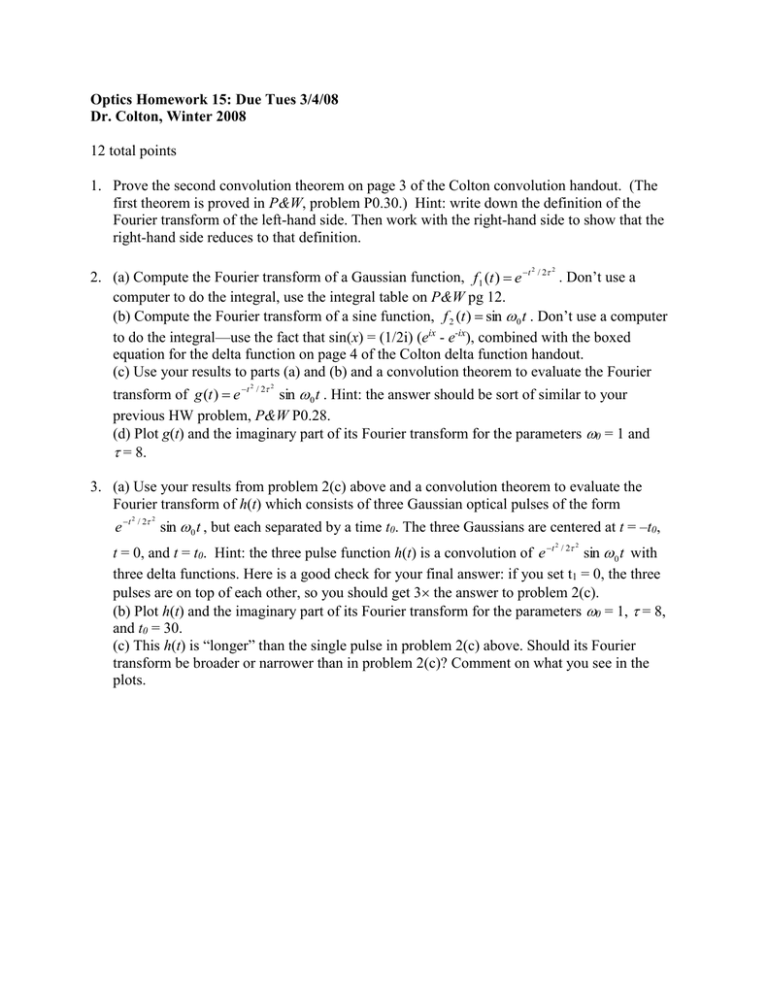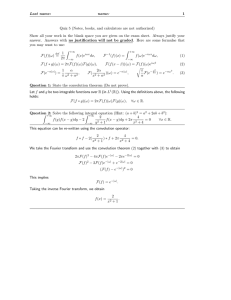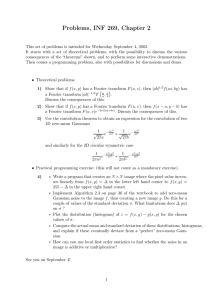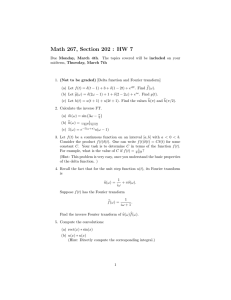hw 15.doc
advertisement

Optics Homework 15: Due Tues 3/4/08 Dr. Colton, Winter 2008 12 total points 1. Prove the second convolution theorem on page 3 of the Colton convolution handout. (The first theorem is proved in P&W, problem P0.30.) Hint: write down the definition of the Fourier transform of the left-hand side. Then work with the right-hand side to show that the right-hand side reduces to that definition. 2. (a) Compute the Fourier transform of a Gaussian function, f 1 (t ) e t / 2 . Don’t use a computer to do the integral, use the integral table on P&W pg 12. (b) Compute the Fourier transform of a sine function, f 2 (t ) sin 0 t . Don’t use a computer to do the integral—use the fact that sin(x) = (1/2i) (eix - e-ix), combined with the boxed equation for the delta function on page 4 of the Colton delta function handout. (c) Use your results to parts (a) and (b) and a convolution theorem to evaluate the Fourier 2 2 transform of g (t ) e t / 2 sin 0 t . Hint: the answer should be sort of similar to your previous HW problem, P&W P0.28. (d) Plot g(t) and the imaginary part of its Fourier transform for the parameters 0 = 1 and = 8. 2 2 3. (a) Use your results from problem 2(c) above and a convolution theorem to evaluate the Fourier transform of h(t) which consists of three Gaussian optical pulses of the form e t 2 / 2 2 sin 0 t , but each separated by a time t0. The three Gaussians are centered at t = –t0, t = 0, and t = t0. Hint: the three pulse function h(t) is a convolution of e t / 2 sin 0 t with three delta functions. Here is a good check for your final answer: if you set t1 = 0, the three pulses are on top of each other, so you should get 3 the answer to problem 2(c). (b) Plot h(t) and the imaginary part of its Fourier transform for the parameters 0 = 1, = 8, and t0 = 30. (c) This h(t) is “longer” than the single pulse in problem 2(c) above. Should its Fourier transform be broader or narrower than in problem 2(c)? Comment on what you see in the plots. 2 2









